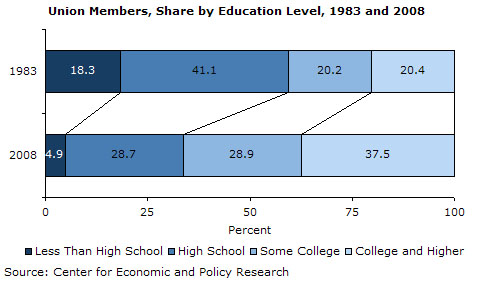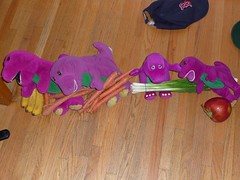I recently had the opportunity to attend an professional development seminar for elementary school math teachers. The topic was Practical Differentiation Strategies in Math.
It was a dinner-and-talk event. Several schools sent several teachers, and occasionally an administrator, to socialize and the listen to a 90 minute presentation. There were somewhere around 3 dozen people in attendance.
The talk was given by Liz Stamson, a math specialist with Math Solutions. You can see a related set of slides for a talk by her
here. Those slides are for the webinar at
this link to differentiation.Stamson's talk was more specifically geared to engaging the math teachers. She spent most of her time talking about creating lesson plans and assignments that met the goals of differentiated instruction.
Stamson's talk assumed the full-inclusion classroom. She began the talk by saying that teachers were already needing to address students that could have vastly different "entry points" into the math curriculum. No mention was made of whether this was good or bad, whether grouping by ability was a help or hindrance. Full inclusion was a fact for teachers, not a point of argument.
Given that, she said, differentiation (that was the phrase, not differentiated instruction) was a way to help teachers engage all of their students. She stressed that differentiation could occur in content, process, and product. Her main ideas in how to differentiate content were to create "open tasks": questions that didn't have set answers, but had a multitude of answers. For example:
"what is the perimeter of a rectangle with length 10 and width 3", is a "closed" task. It has one answer. Such closed tasks, with one solution, and no critical thinking, does not lend itself to a differentiated classroom.
Instead, she promoted "open tasks" and "choice." What she meant by "open tasks" were problems that don't have one answer. By "choice" she meant allow the students to choose which problems on a problem set they must do. For example, instead of asking the above perimeter question, one could ask "describe a rectangle whose perimeter is 20." Such a task "opens" the problem to more creative thinking, allowing the more advanced students to find their own solutions (or to find a set of solutions), while still allowing the minimally skilled students to contribute. She said she'd offered the following "assignment" to her students, she said : "Do all the problems whose answers are even." This promotes critical thinking, she said, as they must investigate all of the problems to learn which ones fit the criteria.
She illustrated an open task with the "Which Does Not Belong" problem.
She gave the following sets:
2, 5, 6, 10
9, 16, 25, 43
cat, hat, bat, that
She asked the teachers to "work" the following problems. Teachers were seated together by grade (rather than by school), and were asked to collaborate. For each set, remove one item. Find a rule by which all of the remaining elements belong to the set, but the removed one does not. Repeat for all items.
The teachers gave a variety of answers.
Someone said that with the 2 removed, the remaining numbers' words were in alphabetical order. One said that with the 5 removed, the remaining numbers could all be written by 3 letter words. Another said all the remaining numbers were even. With the 10 removed, the remaining numbers were single digits said someone. With the 6 removed, the numbers formed a set of divisors of 10 (or alternately formed the number sentence 2 * 5 = 10.)
Ms. Stamson used this variety of answers to illustrate her point: all answers were valuable, no one had to get the "wrong" answer, even if some students didn't see immediately what the others did. This was practical differentiation--the more complicated patterns were found by the more advanced students, the less in depth by the students with less skills, but all could satisfy the assignment. The later grades could use factors, fractions, or other mathematical terms more appropriate to their lessons, while the younger grades could do this assignment with words or pictures if necessary.
She encouraged the teachers to create their own sets during this talk, stopping for several minutes.
Differentiation of process and product seemed to mean giving out different problems/homework/quizzes to different children. She advocated designing assessments/quizzes with several problems whose values were weighted, and requiring the student to complete a certain total value of problems, but allowing the students to pick which to do. The simplest problems were worth 1 point, say, and the hardest 10, and 15 points were needed for completion of the assignment. She suggested that such choice allowed all student to build confidence. She said also that it allowed a teacher to be "surprised" by a student who did difficult problems when the teacher expected to only do the easiest problems (as well as surprised when a good student did only the easiest). She also offered that the best students would challenge themselves and do all of the problems, so this provided a way to meet their needs for more or harder work.
When a teacher asked whether such choices were really practical, she admitted that such assignments might not be practical for daily practice, but suggested simply offering different students different problems. "Do you actually suggest assigning different problems to each student?" one teacher asked. Yes, she said: just hand out a worksheet, and highlight problems 3,4, and 7 for one child, and 1, 8, 9 for another. "If the culture of your classroom celebrates differences, then it's natural. We are all different, so of course we all have different strengths, and we all do different practice problems."
I could not tell from my vantage point, seated with a few lower grade teachers, if the room generally viewed the talk favorably. I assume the answer was yes, as who would attend such an evening if they were not already so inclined? The teachers at my table were quite dutiful at doing her assignments to us during dinner, and took very seriously everything she was saying. There were few questions from the audience, though. I couldn't tell, but perhaps that's just the style of talk, or the general behavior of a Minnesotan audience.











